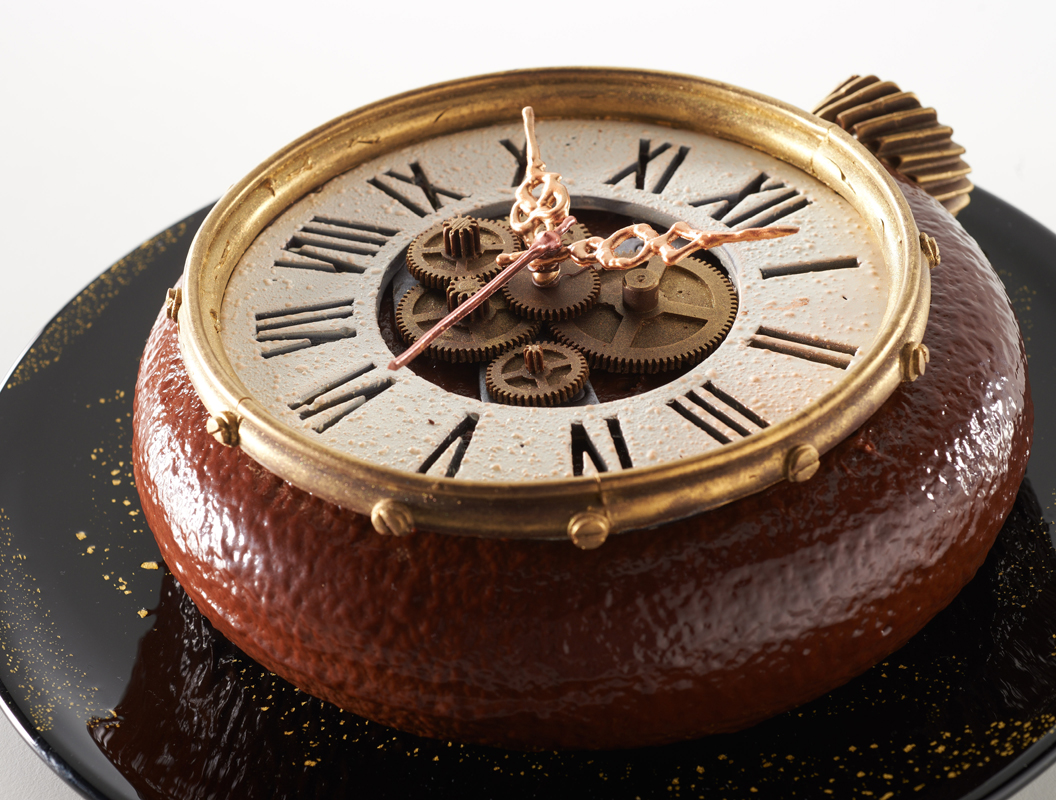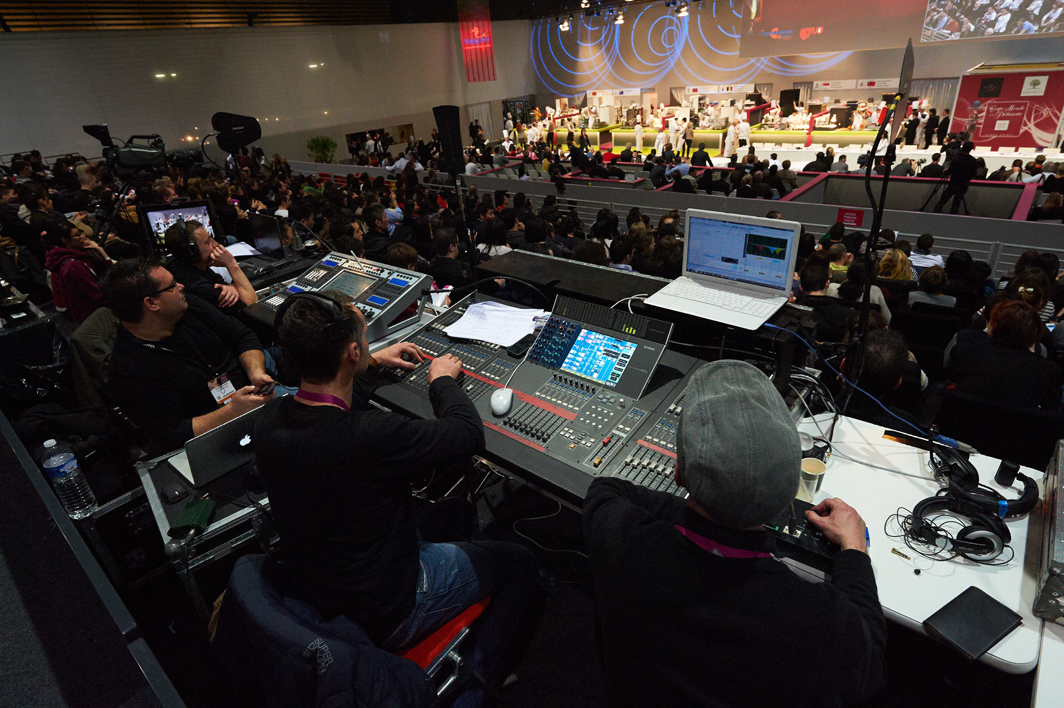
For any pastry chef interested in achieving recognition, the Pastry World Cup (Coupe du Monde de la Pâtisserie) is the most prestigious culinary competitions in the world. So much effort, skill and in some cases years of practice have helped make this the ultimate prize to win.
Started in 1989 by French Master Pastry Chef Gabriel Paillasson, the Pastry World Cup is held once every two years in Lyon, at the Sirha trade food show. The competition pits 22 country teams against each other for medals and trophies. Each team consists of three chefs who produce a chocolate dessert, a frozen dessert and a plated dessert, along with three sculptures crafted from sugar, chocolate and ice.
Each country takes it in turn to bring their desserts out to great fanfare and huge media coverage.
A team needs to produce two of each dish so that one can be available for the press to take 100’s of photos and the second is sliced into portions and offered to the 22 judges.
Unlike other culinary contests where the atmospere is usually respectfully subdued, the Pastry World Cup is more akin to a football match as the 4 tiered bleachers are packed with hundreds of noisy supporters from each country, cheering their team on. Such is the prestige of the contest that is is shown live on several television networks, complete with a compère to explain to the audience at home how the events are unfolding.
2009 (20th Anniversary)
In 2009 I was invited to write about the contest by Almond Board of California and in particular interview the USA team. The day before the contest the American team sat down with me for an interview so I could get some background on the team for the story I was writing for several publications. They explained that each team choose a theme a year before the contest and spend 3-4 days a month getting together and practising their recipes and display pieces. To enter contests at this level you need to be excellent at pastry but also work for an understanding employer, so you can practice enough.

The Day of the Contest
Is a grulling 10 hours where each team makes their desserts and chocolate and sugar centrepieces, so nerves are jangling and the pressure intensifies in the last couple of hours which is filmed live.
Bad luck turned the fortunes of the Dutch and American teams in separate instances. Team USA’s 3 foot chocolate sculpture fell over when the team tried moving it in their overheated kitchen, just a mere 20 minutes before the end of the competition. A more dramatic calamity happened to the Netherlands sculpture when it collapsed from the display table and broke into a thousand pieces in front of the huge audience. Deafening silence fell upon the room as all eyes and TV cameras turned to the stunned Dutch team who could barely believe what had happened.

The French team were clearly the favourites, ably led by their 23 year old captain Jerome de Olveira, they showed nerves of steel and tremendous skill. In a post contest interview, I asked them if they felt additional pressure because France has won this competition so many times. With modesty they explained their focus didn’t give them time to consider or worry about the history of the competition.

I wrote several articles on the 2009 Pastry World Cup one magazine article can viewed on my media wall entitiled Wolrd Championship Cookery. one of my online articles can still be seen here. Chef magazine blogspot
Pastry World Cup 2013
The next time I reported on the event was in 2013, and the standard had gotten higher when you see complex chocolate desserts like this time piece by the Belgium team.

That year the Coupe du Monde de la Pâtisserie had 22 finalists; Australia, Ivory Coast, France, Argentina, Belgium, China, Columbia, South Korea, Denmark, Egypt, United States, Italy, Japan, Malaysia, Morocco, Mexico, Portugal, United Kingdom, Singapore, Taiwan, Brazil and Tunisia. Each county competing in the final also send a chef judge to ensure fair results.
And to give the reader a better idea of the TV coverage of the show,

Or how large the auditorium is take a look at the panoramic view from the 2013 show.

2015
In 2015 there were 21 teams in the final. Algeria, Argentina, China, Colombia, Denmark, Egypt, Guatemala, Italy, Japan, Malaysia, Mexico, Morocco, Philippines, Singapore, South Korea, Sweden, Switerland, Taiwan, Tunisia, United Kingdom and the United States. The UK team achieved 6th place, which was their highest result since the began entering the contest. The UK’s chosen theme was the Lion King.
2015 Results
Italy came 1st, Japan 2nd and the USA 3rd.
Format change
When I first reported on the Pastry World Cup final in 2009 there were 22 teams and the contest consisted of 11 teams the first day and 11 teams the second day. Now the contest has been streamline so their are only 11 countries completing in the final. This grueling contest is still lasts for 10 hours giving the spectators and contestants plenty of time for frayed nerves.
2021 Results and the intrigue
Italy came 1st for the third time since the contest began in 1989. Another strong showing by the Japanese team got them the silver medal and France looked shocked and disappointed to only achieve bronze.
Italy wins the Pastry World Cup but UK chef feels frozen out by politics
I have pinterest board I set dedicated to the Coupe du Monde de la Pâtisserie just click below to see more photos. I update the board from time to time.
Reporting on the Pastry World Cup©Kevin Ashton 2021